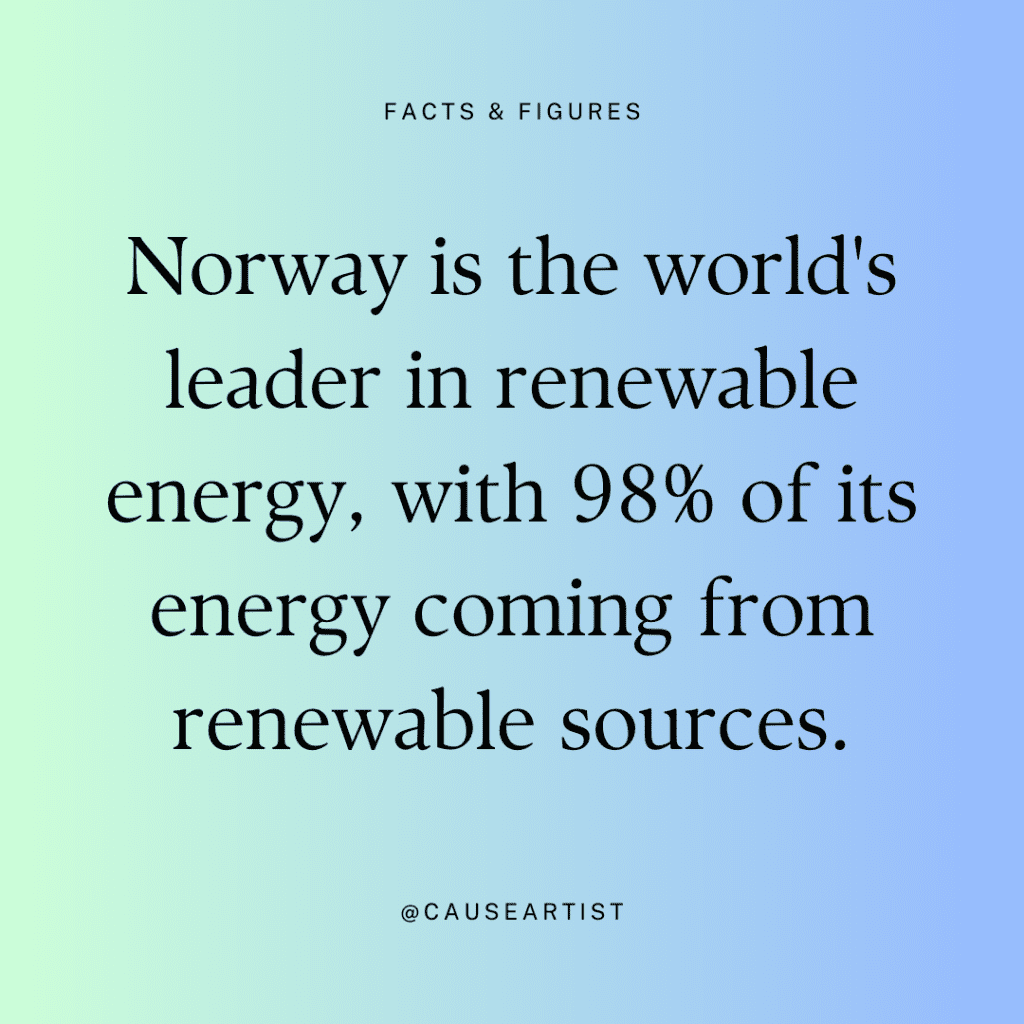- What is Renewable Energy
- Types of Renewable Energy
- Benefits of Renewable Energy
- The Role of Renewable Energy in Sustainable Development
Renewable energy has emerged as a vital component in the global pursuit of sustainable development. As the world grapples with the challenges of a changing climate and depleting fossil fuel reserves, renewable energy sources have gained significant prominence.
- Renewable energy sources generated 38% of global electricity in 2021, up from 26% from 2010.
- Wind and solar were the fastest-growing renewable energy sources in 2021, with their combined share of global electricity generation increasing from 7% to 10%.
- The United States is the world’s leading producer of wind and solar power.
- Norway is the world’s leader in renewable energy, with 98% of its energy coming from renewable sources.

What is Renewable Energy
Renewable energy refers to energy derived from naturally replenishing sources that are virtually inexhaustible. Unlike fossil fuels, which deplete over time, renewable energy sources have the ability to regenerate within a reasonable period.
These sources include solar radiation, wind power, hydropower, biomass, and geothermal heat. Harnessing energy from these renewable sources reduces dependence on non-renewable resources, mitigates greenhouse gas emissions, and promotes environmental sustainability.
Types of Renewable Energy
Solar Energy
Solar power involves converting sunlight into electricity using photovoltaic (PV) cells or concentrating solar power (CSP) systems. PV cells directly convert sunlight into electricity, while CSP systems concentrate solar energy to generate steam, which drives turbines for electricity generation.
Wind Energy
Wind turbines capture kinetic energy from the wind and convert it into electricity. As the wind passes through the turbine blades, the rotational motion drives an electrical generator.
Hydropower
Hydropower harnesses the kinetic energy of flowing or falling water to generate electricity. It typically involves constructing dams or barrages to control the flow of water, which drives turbines connected to generators.
Biomass Energy
Biomass energy utilizes organic materials such as crop residues, wood, and dedicated energy crops to produce heat or electricity through processes like combustion or biochemical conversion.
Geothermal Energy
Geothermal power utilizes the natural heat stored beneath the Earth’s surface. This energy is extracted through geothermal power plants, which tap into hot water or steam reservoirs to drive turbines and generate electricity.
Benefits of Renewable Energy
Energy Security and Independence
Diversifying energy sources through renewables reduces reliance on fossil fuels, minimizing vulnerability to price volatility and geopolitical tensions.
Renewable energy enhances energy security by tapping into domestic resources and fostering local job creation.
Economic Growth and Job Creation
Renewable industries create employment opportunities across various sectors, including manufacturing, construction, installation, and maintenance.
The transition to renewable energy fosters economic growth by attracting investments, stimulating innovation, and developing new market opportunities.
Health and Environmental Co-benefits
Unlike fossil fuel combustion, renewable sources produce minimal air and water pollution, leading to improved public health and reduced healthcare costs.
Furthermore, renewable technologies have a smaller ecological footprint, conserving biodiversity and ecosystems.
Energy Access and Equity
Renewables offers a viable solution for providing electricity too remote and underserved regions.
Off-grid renewable systems, such as solar home systems, enable access to clean energy and enhance the lives of marginalized communities, promoting energy equity.
The Role of Renewable Energy in Sustainable Development
Clean Energy Transition
Shifting from fossil fuels to renewable energy sources is vital for achieving a sustainable, low-carbon energy mix. By decoupling economic growth from environmental degradation, renewables support a more resilient and climate-friendly energy system.
Environmental Stewardship
Renewables minimizes pollution, protects ecosystems, and conserves natural resources, thereby ensuring a sustainable and livable planet for future generations.
Global Energy Transformation
Renewables facilitates the transition from centralized fossil fuel-based energy systems to decentralized and democratized systems. The proliferation of renewable energy empowers individuals, communities, and countries to participate actively in energy generation, distribution, and consumption.
Resilient Infrastructure
Renewables diversifies energy sources, enhances grid flexibility, and fosters decentralized energy systems, making them more resilient to natural disasters, power outages, and other disruptions.








